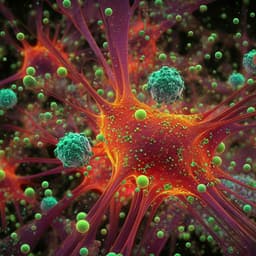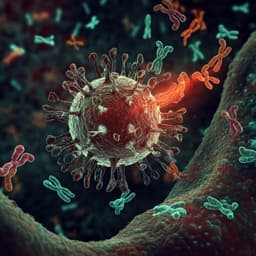
Medicine and Health
Human papillomavirus-encoded circular RNA circE7 promotes immune evasion in head and neck squamous cell carcinoma
J. Ge, Y. Meng, et al.
Discover groundbreaking insights from researchers Junshang Ge, Yi Meng, Jiayue Guo, and colleagues, as they unveil a significant negative link between HPV-encoded circular RNA, circE7, and CD8+ T cell infiltration in head and neck squamous cell carcinoma. Their innovative findings suggest combining anti-PD-1 and anti-TIM-3 inhibitors could represent a novel immunotherapy approach.
Playback language: English
Related Publications
Explore these studies to deepen your understanding of the subject.







